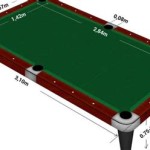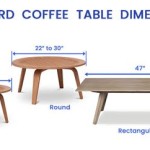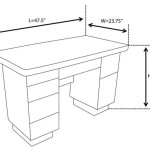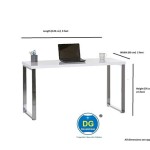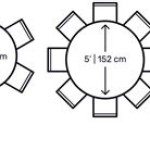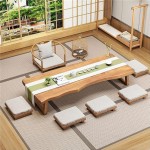The Enduring Appeal of Farmhouse Tables with Leaves: Functionality and Style
Farmhouse tables, with their inherent warmth and rustic charm, have become a staple in contemporary dining spaces. Their robust construction and simple designs evoke a sense of tradition and communal gathering. However, the integration of leaves elevates the farmhouse table from a charming piece of furniture to a highly functional and versatile dining solution. A farmhouse table with leaves offers the perfect balance between everyday practicality and the ability to accommodate larger gatherings, making it an ideal choice for families and those who frequently entertain.
The addition of leaves allows the table to be easily adjusted in size, adapting to various dining needs. This adaptability is particularly valuable in homes where space is at a premium. A smaller farmhouse table can comfortably seat a family for daily meals, while the leaves can be inserted to expand the seating capacity for holidays, parties, or impromptu get-togethers. This eliminates the need for a separate, larger dining table that would otherwise occupy valuable space. The design aesthetic remains cohesive whether the leaves are in place or not, preserving the farmhouse table's distinct character.
Understanding the Design and Construction
The construction of a farmhouse table with leaves typically involves a solid wood frame, often featuring sturdy legs and a thick tabletop. Common wood choices include pine, oak, maple, and reclaimed wood, each offering a unique grain pattern and aesthetic appeal. These woods are chosen for their durability and ability to withstand daily use. The leaves themselves are usually constructed from the same wood as the tabletop to ensure visual consistency. The mechanism for inserting and securing the leaves varies depending on the design, but common methods include drop-leaf hinges, butterfly leaves, and extension mechanisms with metal slides.
Drop-leaf tables are characterized by leaves that are hinged to the main tabletop and can be raised or lowered as needed. This design is particularly suitable for smaller spaces as the leaves fold down to create a narrow profile when not in use. Butterfly leaves are stored underneath the tabletop and flip up to create an extension. This mechanism is relatively simple and efficient, making it a popular choice for farmhouse tables. Extension mechanisms with metal slides allow the tabletop to be pulled apart, creating a gap into which one or more leaves can be inserted. These mechanisms offer a seamless transition between the main tabletop and the leaves, resulting in a more uniform and polished appearance.
The joinery techniques used in constructing a farmhouse table with leaves are crucial for its stability and longevity. Mortise and tenon joints, dovetail joints, and reinforced apron connections are commonly employed to ensure that the table can withstand the weight and stress associated with regular use. The finish applied to the table also plays a significant role in its durability and aesthetic appeal. Options range from traditional stains and varnishes to painted finishes and distressed treatments, each contributing to the overall farmhouse aesthetic. A protective topcoat is essential to guard against scratches, spills, and other types of damage.
Advantages of Choosing a Farmhouse Table with Leaves
The versatility of a farmhouse table with leaves is its primary advantage. It allows homeowners to adapt their dining space to accommodate varying numbers of guests without sacrificing style or functionality. This adaptability is particularly beneficial for those who live in smaller homes or apartments where space is limited. The leaves can be easily removed or inserted as needed, providing maximum flexibility. The ability to transform a smaller table into a larger one is a significant advantage over fixed-size dining tables.
Beyond its functional benefits, a farmhouse table with leaves also offers aesthetic appeal. The rustic charm and natural materials associated with farmhouse design add warmth and character to any dining room. The tables often serve as a focal point, creating a welcoming and inviting atmosphere. The integration of leaves does not detract from the overall aesthetic; rather, it enhances the table's versatility and functionality. Whether the leaves are in place or not, the table maintains its distinct farmhouse character.
Furthermore, farmhouse tables are known for their durability and longevity. Constructed from solid wood and employing robust joinery techniques, these tables are designed to withstand the rigors of daily use. A well-maintained farmhouse table can last for generations, becoming a cherished heirloom. The addition of leaves does not compromise the table's durability; in fact, it enhances its value by providing added functionality. The investment in a high-quality farmhouse table with leaves is a long-term investment in both style and practicality.
Factors to Consider When Selecting a Farmhouse Table with Leaves
When selecting a farmhouse table with leaves, several factors should be considered to ensure that the chosen table meets your specific needs and preferences. The size of the table is a crucial consideration. Measure your dining space carefully to determine the appropriate dimensions for the table both with and without the leaves in place. Consider the number of people you typically need to accommodate and how often you entertain larger groups. A table that is too large can overwhelm a small space, while a table that is too small may not adequately meet your dining needs.
The type of wood used in the construction of the table is another important factor to consider. Different woods offer varying levels of durability, aesthetic appeal, and price. Pine is a relatively soft and affordable wood, while oak and maple are harder and more durable but also more expensive. Reclaimed wood offers a unique and rustic aesthetic but may require more maintenance. Choose a wood that aligns with your budget and desired aesthetic, considering its durability and suitability for your lifestyle.
The mechanism for inserting and securing the leaves should also be carefully evaluated. Consider the ease of use and the stability of the leaves when they are in place. Drop-leaf tables are convenient for small spaces, while butterfly leaves and extension mechanisms offer a more seamless transition between the main tabletop and the leaves. Choose a mechanism that is user-friendly and provides a secure and stable surface for dining. The quality of the mechanism will impact the overall functionality and longevity of the table.
The finish of the table should be chosen to complement your existing décor and withstand daily use. Consider the color and texture of the wood, as well as the type of finish applied. Stains and varnishes enhance the natural beauty of the wood, while painted finishes offer a more contemporary look. Distressed treatments add to the farmhouse aesthetic, creating a rustic and weathered appearance. Choose a finish that is durable and easy to clean, as well as aesthetically pleasing.
Finally, consider the overall style and design of the table. Farmhouse tables come in a variety of styles, ranging from traditional to modern. Choose a table that complements your existing furniture and décor, creating a cohesive and harmonious dining space. The table should reflect your personal style and preferences, reflecting the overall aesthetic of your home. Consider the details, such as the shape of the legs, the design of the apron, and the finish of the hardware, to ensure that the table aligns with your vision.
Incorporating a Farmhouse Table with Leaves into Your Home Décor
Integrating a farmhouse table with leaves into your home décor requires careful consideration of the surrounding elements. The table should be positioned in a way that maximizes space and allows for comfortable seating. Consider the placement of chairs, lighting, and other furniture to create a cohesive and inviting dining space. The table should serve as a focal point, drawing attention to its rustic charm and functional design.
The chairs chosen to accompany the farmhouse table should complement its style and provide comfortable seating. Options range from traditional wooden chairs to more modern upholstered chairs. Consider the height of the chairs in relation to the table, ensuring that diners are seated comfortably. Mix and match different styles of chairs to create a more eclectic and personalized look. Consider adding cushions or pillows for added comfort and visual appeal.
Lighting plays a crucial role in setting the mood and enhancing the overall aesthetic of the dining space. A chandelier or pendant light suspended above the table can create a focal point and provide ample illumination. Add sconces or table lamps to provide additional lighting and create a warm and inviting atmosphere. Choose lighting fixtures that complement the style of the table and the surrounding décor. Consider the color temperature of the light, opting for warmer tones to create a cozy and inviting ambiance.
Accessories can be used to personalize the dining space and add visual interest. A centerpiece on the table can serve as a focal point, drawing attention to its rustic charm. Consider using a floral arrangement, a collection of candles, or a decorative bowl to create a visually appealing centerpiece. Add placemats and napkins to protect the table and add a touch of elegance. Choose accessories that complement the style of the table and the surrounding décor, creating a cohesive and harmonious dining space.
Rugs can be used to define the dining area and add warmth and texture to the space. Choose a rug that is large enough to accommodate the table and chairs, allowing the chairs to be pulled out without catching on the edge of the rug. Consider the color and pattern of the rug, opting for a design that complements the style of the table and the surrounding décor. Choose a rug that is durable and easy to clean, as the dining area is prone to spills and stains. A well-chosen rug can enhance the overall aesthetic of the dining space and create a more inviting atmosphere.

Diy Farmhouse Table With Extension Leaves Plans Sweet Tooth Life

Rustic Erfly Leaf Table Sets Self Storing Leafs Red Timbers

James Home Page Diy Dining Room Kitchen Table Farmhouse

Urban Farmhouse Dining Table W Leaves Amish Furniture By Shipshewana Co

Diy Farmhouse Table With Extension Leaves Plans Sweet Tooth Life

Long Farmhouse Table With 2 Leaves Got Legs Furniture Décor

483 Farmhouse Extension Table Dining With Leaves Leaf Small Kitchen Tables Diy

Rustic Erfly Leaf Table Sets Self Storing Leafs Red Timbers

Diy Farmhouse Table With Extension Leaves Plans Sweet Tooth Life Dining

Diy Farmhouse Table With Extension Leaves Plans Sweet Tooth Life

